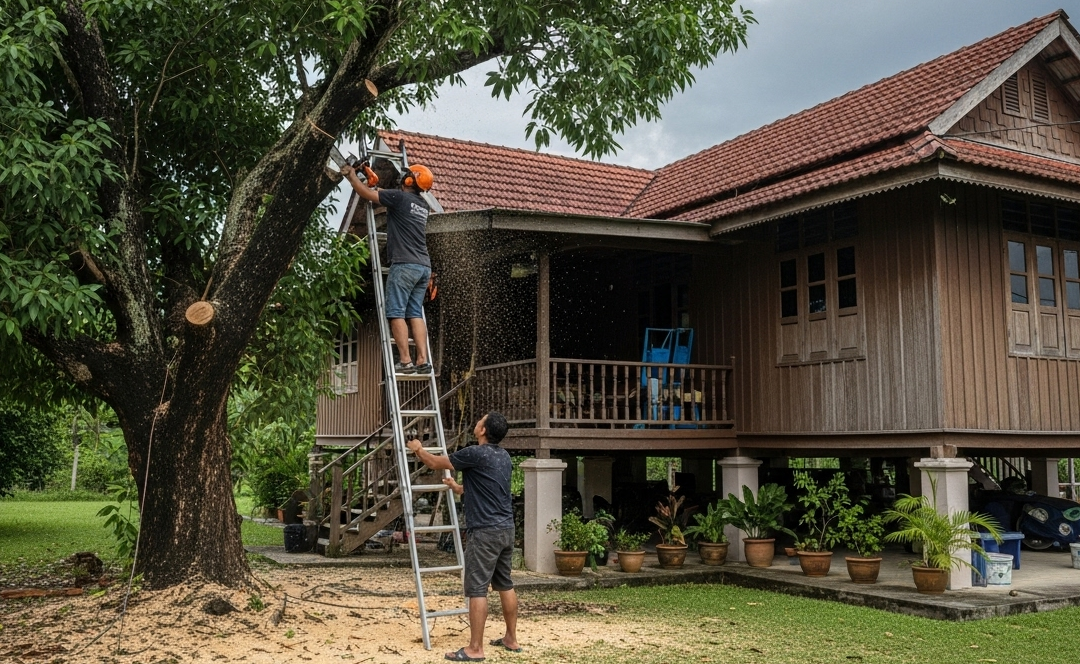Undertaking a tree removal project independently can be a fulfilling endeavor; however, it necessitates meticulous planning and a comprehensive understanding of safety protocols. Prior to operating a chainsaw, adhere to these crucial guidelines to guarantee a safe and effective tree cutting experience.
1. Prioritize Your Safety with the Right Gear
Your first step should always be to equip yourself with the proper personal protective equipment (PPE). Tree cutting is a high-risk activity, and the right gear can prevent serious injury. Make sure you have:
- Hard Hat: To protect your head from falling debris.
- Safety Glasses or Face Shield: To shield your eyes from sawdust and wood chips.
- Hearing Protection: Chainsaws are extremely loud and can cause permanent hearing damage.
- Gloves: For a better grip and to protect your hands from cuts and blisters.
- Chainsaw Chaps or Pants: These are made from protective material that can stop a moving saw chain.
- Steel-toed Boots: To protect your feet from falling objects and a running chainsaw.
2. Assess the Situation and Plan Your Work
Before you make a single cut, take time to inspect the tree and its surroundings.
-
Check the tree’s health and lean: Look for signs of disease, dead branches, or structural weaknesses. The tree’s natural lean and heaviest side will influence the direction of the fall.
-
Examine the surrounding area: Identify any potential obstacles such as buildings, power lines, fences, or other trees. Clear the fall zone of any debris or objects that could interfere with your work.
-
Establish escape routes: Plan at least two safe escape routes, ideally at a 45-degree angle away from the direction of the fall. This ensures you have a clear path to retreat once the tree begins to fall.
-
Determine the size of the job: If the tree is large, diseased, or close to a structure, it may be too risky for a DIY approach. In such cases, it’s always best to hire a professional arborist.
3. Master the Proper Cutting Techniques
The two most crucial cuts for felling a tree are the notch cut and the felling cut.
-
The Notch Cut: On the side of the tree facing the direction you want it to fall, make a V-shaped notch. The notch should be shallow and reach about a quarter to a third of the way into the tree’s diameter. This cut will guide the tree’s fall.
-
The Felling Cut: Move to the opposite side of the tree and make a horizontal cut slightly above the bottom of the notch. This cut creates a “hinge” of wood between the two cuts, which is critical for controlling the direction of the fall. As the tree starts to move, stop the cut and retreat to your planned escape route.
4. The Right Tools for the Right Job
While a chainsaw is the primary tool for felling a tree, other tools are essential for a safe operation.
-
Felling Wedges: These plastic wedges are hammered into the felling cut to prevent the saw from getting pinched and to help guide the tree’s fall.
-
Rope and Come-Along: For larger trees, ropes can be used to apply force and ensure the tree falls in the desired direction.
-
Pruning Tools: Use loppers or a hand saw for removing smaller branches, or “limbing,” once the tree is on the ground.
By following these guidelines, you can significantly reduce the risks associated with tree cutting and complete your project safely and effectively.
Conclusion: When in Doubt, Trust the Professionals
While grasping these techniques can equip you for minor tasks, the most important lesson is recognizing your limitations. Tree cutting is fundamentally hazardous, and despite thorough preparation, unforeseen factors may occur. For large, intricate, or unhealthy trees, or those situated close to power lines or buildings, the wisest and safest choice is invariably to contact a certified arborist. Their expertise, specialized tools, and insurance guarantee that the task is completed safely, safeguarding both you and your property. Your safety is far more valuable than any savings from do-it-yourself efforts.

